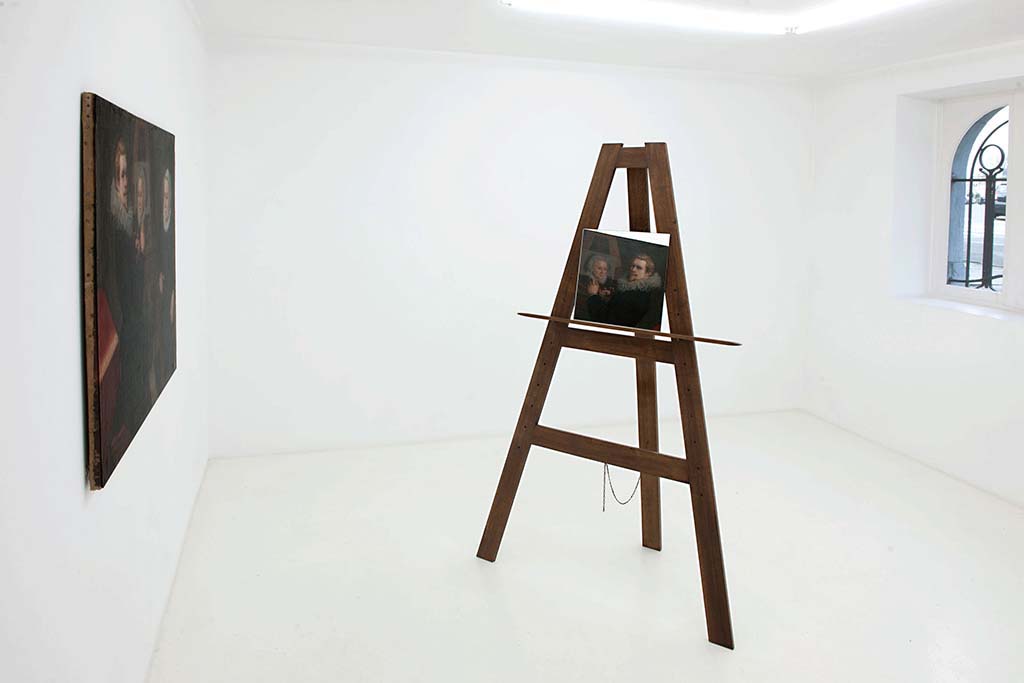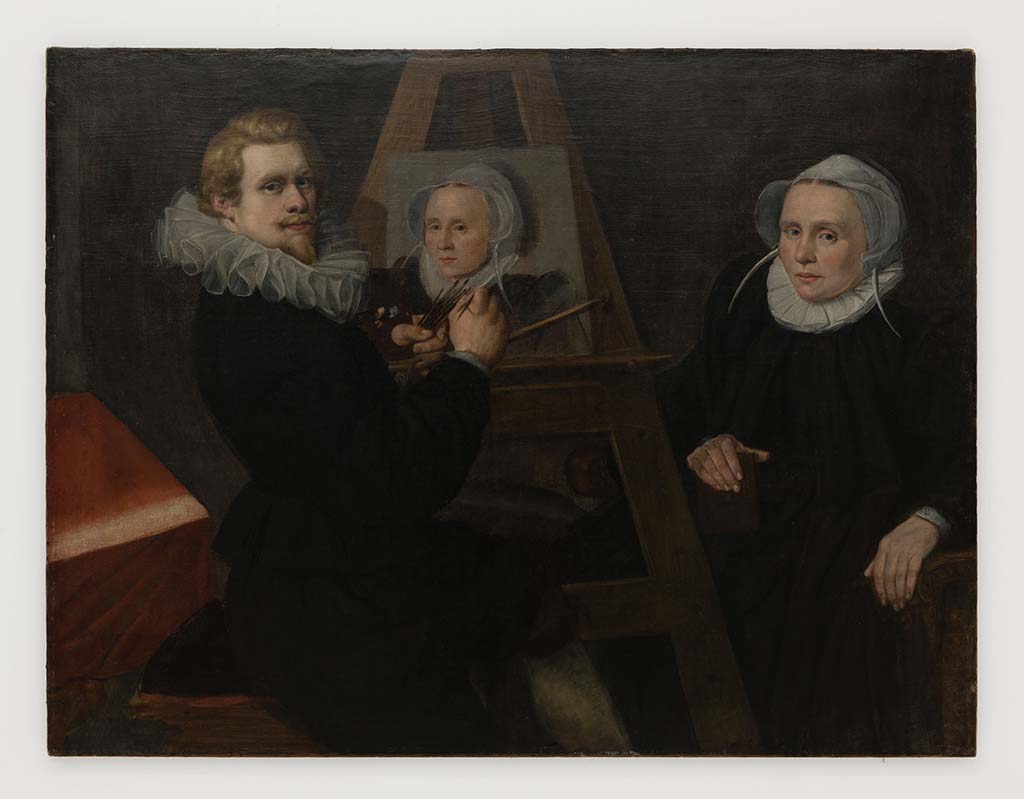La Dimension du Miroir
The Dimension of The Mirror, 2011
Antique painting, mirror and wood, variable dimensions
The Dimension of the Mirror is an installation consisting of a wooden easel, a mirror and a painting dating from the turn of the 17th century, by the Dutch artist Maerten Pietersz. Deym (1566/67-1624), depicting the painter himself, viewed from behind, in the process of painting a portrait of a woman sitting piously opposite him.The painting was probably painted in two stages: a first stage, when he painted himself with his wife (using a mirror) and a second stage, when he painted the easel (which could not be painted when the large painting here was standing on the easel). This work is hung so that the visitor’s first glance falls on the mirror resting on the easel placed in the middle of the room. Of the same dimensions as the work on Deym’s easel, the mirror is set up so that, on entering the room, only a part of the canvas can be seen, in this case, the painter and the portrait painted, not the model nor the periphery of the scene.The easel, meanwhile, is an exact replica of the one painted by Deym. Ultimately, the device used by Samyn is an allegory of painting. What we can see is a reflection. The painting is already a reflection of reality. The painting in the painting is a reflection of a reflection. So we are looking at a reflection of a reflection of a reflection… not forgetting that left and right are reversed. Looking at this reflection in the mirror on the easel, the visitor is both the viewer, the artist, the model, the painter of the painter, the friend. In this case: “I is, was and will be the others.”
La Dimension du Miroir est une installation mettant en scène un chevalet en bois, un miroir et une peinture datant du 17e siècle réalisée par l’artiste néerlandais Maerten Pietersz Deym (1566/67-1624). Cette dernière est un autoportrait du peintre vu de dos en train de réaliser le portrait d’une femme pieusement assise en face de lui. Le tableau a probablement été peint en deux étapes : l’artiste s’est d’abord peint en compagnie de sa femme (à l’aide d’un miroir), et a ensuite peint le chevalet (celui-ci ne pouvait servir de modèle lorsque la toile y reposait). L’oeuvre est agencée de telle sorte que l’observateur ne voit pas immédiatement la peinture: l’oeil est d’abord attiré par le miroir qui repose sur le chevalet au centre de la salle d’exposition. Le miroir, de même dimension que la peinture sur le chevalet de Deym, est positionné de manière à ne refléter qu’une partie de la toile: le peintre et le portrait. Le modèle et le décor de la scène ne sont pas visibles. Le chevalet, quant à lui, est l’exacte réplique de celui de Deym. Dans son ensemble, l’installation de Fabrice Samyn est une allégorie du travail du peintre. Ce que nous voyons est un reflet. La peinture est elle-même le reflet de la réalité. Nous sommes donc face au reflet du reflet d’un reflet. Lorsqu’il contemple ce reflet dans le miroir du chevalet, le visiteur est à la fois l’observateur, l’artiste, le modèle, le peintre du peintre, et l’ami. Dans ce schéma, “Je est, était et sera les autres”.

